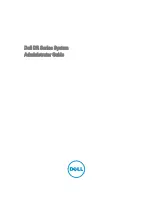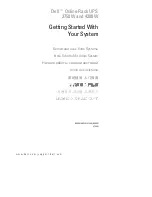
Section II
Installation
Page 2.2
BP
II S, 3.00
08/96
3. Remove the screws holding the panel to expose the terminals at the rear of the
cabinet. Knockouts can be made in this cover for input/output conduit
connections. For ease of installation, input/output connections can be made with
flexible conduit. This will enable the UPS to be rolled back toward a wall,
reducing floor space requirements.
4. The UPS cabinet can now be rolled on its casters to its final destination. When it
is in that location, tightening the locking bolt on each caster will hold the unit in
place.
NOTE:
For proper ventilation and maintenance access, a clear area three (3
′
)
feet (91.4 cm) on the left side, six (6
″
) inches (15.2 cm) on the right side
and one (1
′
) foot (30.5 cm) at the rear is recommended.
5. Remove the top and left side panels to expose the batteries in the lower sections.
The top is removed by unscrewing the three screws at the upper rear of the
cabinet. Slide the top toward the rear while lifting it. The upper left side panel is
removed by sliding up from the locking bracket. The lower side panel then can
be removed by unscrewing the three screws along the top of the panel and sliding
it up from the locking bracket. If foam blocks are inside the battery trays, leave
them in place. They are to keep small batteries from moving around inside the
trays.
0.
The battery trays are shipped bolted to the shelf supports and should be left fastened
down.












































